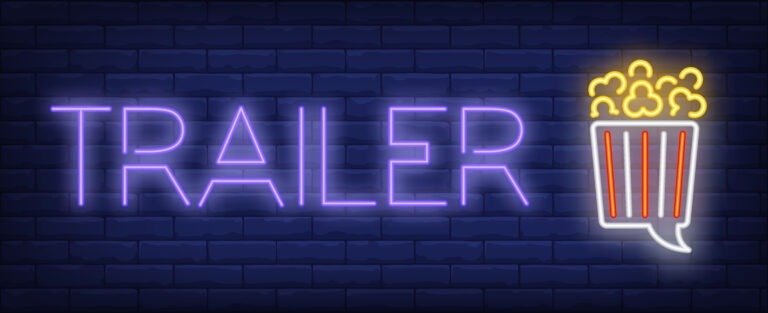Writing a broadcast script doesn’t have to be hard work. In order to write an effective broadcast script, you need to understand broadcast rules and be able to craft engaging dialogue. An example of a broadcast script might include a voice-over introducing a program, a conversation between characters, or general storytelling. At Voice123, we’ve compiled free script resources to help you write killer broadcast scripts.
Let’s take a closer look, shall we?
What are broadcast scripts?
At its core, a broadcast script is a document that is written to be read out loud on television or radio. It is different from other forms of writing because it needs to be engaging and follow broadcast rules. Broadcast scripts are usually written with a conversational tone of voice, and include information such as who is speaking, when they are speaking, and where they are speaking. They also include sound effects and music cues.
A broadcast script example would include things like “We hear a car horn in the background” or “The music swells”. Broadcast scripts are an important part of the television and radio industry and require a special set of skills to write them. If you want to write a broadcast script, it is important to understand broadcast rules and to be able to write in a conversational tone of voice.
Broadcast scripts examples
Broadcast scripts #1: News broadcast example
(Opening News Theme Music)
News anchor announcing off camera: “From the heart of our city to wherever you are, this is WXYZ-TV News. I’m John Smith.”
JOHN (on camera): “Good evening, and thanks for joining us. We begin tonight with a developing story…”
(Cut to video footage of a large protest)
JOHN: (Voiceover) “Hundreds have gathered at the city park in response to the proposed school district budget cuts. Educators and parents alike are loudly voicing their concerns.”
(Cut back to JOHN at the anchor desk)
JOHN: “Our own Lisa Montgomery is live at the scene. Lisa, what’s the atmosphere like out there?”
(Cut to LISA MONTGOMERY, standing at the protest with microphone in hand)
LISA: “John, the energy here is intense. Protesters, despite their anger, are trying to remain peaceful as they express their disappointment and worry about the future of their children’s education.”
(Shot of protesters with signs)
LISA: (Voiceover) “They’re demanding a rethink of the budget cuts, arguing that it’s putting their children’s futures at stake.”
(Cut back to LISA, live)
LISA: “We’ll be staying here to monitor the situation and provide updates as the story develops. Back to you, John.”
(Cut back to JOHN at the anchor desk)
JOHN: “Thank you, Lisa. Moving on to other news…”
(ETC., etc.)
(Theme music fades in)
JOHN: “You’ve been watching WXYZ-TV News. Good night.”
(Music fades up and out to time)
Broadcast scripts #2: Product announcement
[Uptempo music, dips]Announcer 1 (Male): Are you ready to step into the future?
Announcer 2 (Female): Hey there, tech enthusiasts! This is TechTalk Radio, and today, we’ve got an announcement that’ll make your wrist the talk of the town.
Announcer 1 (Male): That’s right! Forget everything you know about smartwatches because NexaTech is about to redefine your wearable tech experience. Introducing… the NexaTime!
Announcer 2 (Female): NexaTime isn’t just a smartwatch; it’s your personal assistant, fitness guru, and style icon all rolled into one sleek design. With a 30-day battery life, it’s always ready to keep up with your busy life.
Announcer 1 (Male): And speaking of fitness, the NexaTime boasts a new real-time health analytics system that tracks not only your heart rate but also your hydration levels, oxygen saturation, and even your stress levels. It’s like having a personal health coach right on your wrist!
Announcer 2 (Female): But that’s not all! For the fashion-forward folks, the NexaTime comes with customizable watch faces and straps.
Announcer 1 (Male): Ready to embrace the future? NexaTime launches this Friday at all leading tech stores. And here’s a special treat for our TechTalk listeners: use the promo code “TECHTALK10” to get a 10% discount on your pre-orders.
Announcer 2 (Female): Don’t be left in the past. Elevate your tech game with the NexaTime by NexaTech.
Announcer 1 (Male): NexaTime. Time reimagined.
[Music fades up to end]Broadcast scripts #3: Concert radio promo
DJ: Hey there, rockstars! DJ Jazz here with some electrifying news for all music lovers in ________
Guest host: That’s right, DJ Jazz! On the 25th of this month, Cityville Arena will be hosting the Summer Groove Fest!
DJ: And guess what, listeners? We’ve got big names lined up: The Thunder Beats, Lila Ray, and our very own local sensation, The City Vibes!
Guest host: Tickets are selling out fast. But here’s the exciting part — we’re giving away 5 VIP tickets to our loyal listeners. All you have to do is answer this simple question: What year did The City Vibes release their debut album?
DJ: Text your answers to 555-1234 or hit us up on our social media using the hashtag #SummerGrooveFest. Winners will be announced next Friday!
Guest host: Don’t miss out on the biggest concert of the summer! See you there!
DJ: Keep grooving, y’all!
How to write broadcast scripts
There are several rules to consider when writing a broadcast script in order to ensure that it is engaging and follows broadcast rules:
- The script should be written in a conversational tone that is easy to understand and read aloud. This will help ensure that the audience is engaged and that the script is easy to understand. It often works well when you have two announcers and quick-paced dialogue between them. It tends to capture the listener’s attention and makes the announcement more memorable.
- The script should be concise and to the point. It should include only the necessary information and avoid any unnecessary details.
- The script must adhere to both general broadcast rules as well as station-specific rules. These rules include using appropriate language, probably avoiding any controversial topics, and ensuring that the script follows the applicable formatting.
Proofreading and editing the broadcast script
Proofreading and editing your script can help you catch any typos or grammatical errors. Never forget the importance of punctuation. It really matters because without it, the announcer can turn your messaging into something grotesque – for example:
“I love eating my children and visiting my parents.”
“I love eating, my children, and visiting my parents.” makes all the difference!
If grammar and punctuation aren’t your strong suit, make use of someone who proofreads and edits professionally. A mistake like the one suggested above can be truly embarrassing…
Final thoughts
Writing a broadcast script is a challenging task, but can be great fun. It requires creativity, knowledge of broadcast rules, and an understanding of how to write for the spoken word. It’s important to brainstorm ideas and develop an interesting story before writing the script. Once the script is written, review and edit it to ensure that it is engaging and accurate. By following all the steps we’ve outlined in this article, you can create an effective broadcast script that will engage listeners and deliver compulsive listening – or viewing.
Get writing and have fun!
FAQs
A broadcast script is a type of writing that is used for radio and television broadcasts. It is written to be read out loud and must take into account broadcast rules such as time limits, commercial breaks, and audience engagement.
Rules to consider when writing a broadcast script include timing, the length of the broadcast, commercial breaks, and the tone of voice. It is important to keep the audience engaged and make sure that all of the necessary information is included.
Writing a broadcast script involves several steps. First, it is important to brainstorm ideas and research the topic. Then, the script should be written in a conversational tone that is engaging and entertaining. After that, it is important to edit the script and make sure that it follows the necessary broadcast rules.































